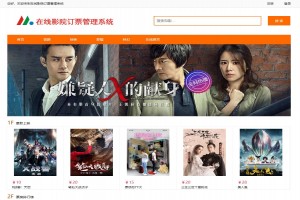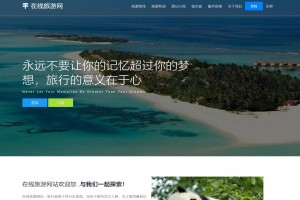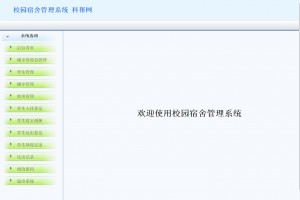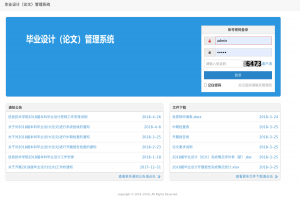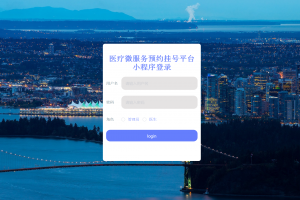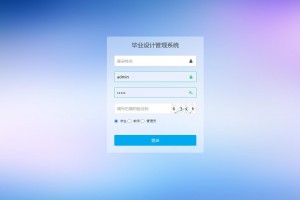在线学习系统外文文献
- 发布时间:
- 2021-01-28 12:56:50
- 3619
摘要:大规模的在线公开课程(MOOC)变得越来越受欢迎,尽管人们对其在诸如传染病暴发等对时间敏感的情况下的效用知之甚少,但是在面临疫情的时候,这一教育方式越来越流行。 研究方法 我们创建了有关埃博拉病毒病的英语大规模在线公开课程。
关键词:网课系统;在线教育;java设计
正文... ...
2015年度埃博拉病毒病流行期间 大规模在线教育课程的开发 摘要 研究目的 2014年埃博拉病毒病疫情爆发时,很多学校的教育课程都难以
进行,这就迫切需要进行在线的网络课程教育。大规模的在线公开课程(MOOC)变得越来越受欢迎,尽管人们对其在诸如传染病暴发等对时间敏感的情况下的效用知之甚少,但是在面临疫情的时候,这一教育方式越来越流行。 研究方法 我们创建了有关埃博拉病毒病的英语大规模在线公开课程。由代表埃默里大学各个部门和六个合作机构的团队设计,这六个模块的课程不仅面向全球的普通观众,而且与医疗保健专业人员相关。 研究结果 来自170个国家/地区的7,000多名学习者参加了在线课程。三分之一以上的学习者来自新兴国家,其中7%来自非洲,另外13%来自美国以外接受埃博拉病毒病治疗的国家。 研究结论 在短时间内开发的第一种英语在线教育,需要主题和Emory的课程开发专家之间进行有效的协作和强有力的协调。通过这些合作,开发团队能够提供急需的培训和教育材料,而埃博拉疫情的流行继续在西非蔓延。 关键词:非洲,疾病暴发,流行病,出血热,埃博拉病毒,学习,大学 研究背景 自2014年埃博拉病毒病(EVD)流行以来,已经进行了大量相关的学术和现场研究。但是,随着疫情的发展,迫切需要全球获得有
关EVD的历史,临床表现和管理,后遗症以及对公共健康的影响的综合培训。全球疫情警报和响应网络呼吁机构建立应对疫情的能力。在将几名患者从西非撤离并在埃默里大学医院的严重传染病科(SCDU)成功治疗后,埃默里处于特别有利的位置,可以提供有关此主题的培训。 近年来,大规模开放式在线课程(MOOC)在普通人群中越来越流行,尽管人们对它们在诸如传染病暴发等对时间敏感的情况下的效用知之甚少。 2014年底推出的法语EVD MOOC为测试在这种情况下使用MOOC奠定了基础。这两个课程都采用公共卫生方法来检查疾病,包括影响人口健康的流行病学和社会因素。我们的课程借鉴了埃默里大学医院治疗EVD感染患者的经验。鉴于在讲法语和英语的西非均存在EVD,并且英语在全球范围内占主导地位,因此迫切需要针对该主题进行英语培训。 Coursera是一个MOOC平台,目前为全球观众提供1,858门课程。这些课程被认为是继续教育,通常不提供学分。 Coursera有147个合作伙伴,包括大学,公司,非营利组织和国际机构。埃默里大学和Coursera在2013年建立了合作关系;埃默里大学是通过Coursera提供MOOC的学术机构之一。 MOOC的主题由每所大学自行决定,尽管Coursera在课程启动前会进行审核。在这里,我们描述了随着2014-15流行病的持续发展,第一个关于EVD的英语MOOC的开发和评估。 教学目标
本课程的目的是让学习者了解不断发展的EVD流行病及其各个方面,包括疾病的预防,管理和治疗,对流行病的反应,道德考量以及EVD后的全球健康状况。 课程开发与制作 在埃默里大学教务长的建议下,“埃博拉病毒病:不断发展的流行病”课程由两名教师设计,他们的主要任职是罗林斯公共卫生学院(RSPH)的休伯特全球卫生系。目标受众是普通大众,但是可以预期,许多具有医学,护理或公共卫生背景的学习者也可以使用该课程。 课程设计于2014年10月至2015年2月进行。教师制定了粗略的课程大纲。接下来,他们确定了内容专家,即各个学术部门的教员,可以担任每个主题的演讲者。演讲嘉宾包括前美国总统,国家过敏免疫学和传染病研究所所长,健康伙伴组织的创始人以及一名EVD幸存者/传染病医生。这些扬声器中有两个是在偏远地区拍摄的。通过个人,专业和/或组织网络招募了所有演讲者参加该课程。 教学技术团队(埃默里图书馆与信息技术的一部分,由教务长办公室资助)协调课程的制作。该团队包括一名指导设计师(ID),摄像师,编辑和两名制作专家。每位演讲者都编写了一套自己的教学材料,并确定了开放式阅读材料,然后由教师进行了审查。最终确定后,教师讲师将与ID共享内容,以考虑Coursera格式进行技术审查。 ID指导教师进行在线内容的有效教学实践。此类策略的示例包括为全球受众选择教学方法,设计有意义的活动和学习者评估以及确保创建与课程目标一致的材料。埃默里大学教务长办公室是课程制作的主要推
动者。尽管安排多个高知名度的演讲者具有挑战性,但这并不是制作的主要障碍。教学设计标准与非时间敏感型课程相同。制作了该课程的宣传预告片,并在Coursera平台上进行了分发以用于营销目的。 该课程于2015年3月启动。学习者可以通过Signature Track免费或以最低费用参加该课程。成功完成课程后,该课程将为学习者提供个性化的验证证书。 教学内容和评估 该课程由六个模块组成,每个模块包含四到六个视频课程。模块格式包括个人讲座,小组讨论以及随附的PowerPoint演示文稿。在许多情况下,视频中包含视频中的问题或反思,可作为学习者的自我检查,通常出现在每个视频的结尾,以突出每个讲座的重点。模块通过Coursera平台定期发布,要求学习者在六周的时间内按顺序完成模块。 每个模块都包括开放阅读的参考资料/资源和讨论板问题。 ID监控讨论板,课程讲师根据需要提供输入。前五个模块使用真/假,封闭式和多项选择题开发了9到11个问题的理解测验。根据测验和参与讨论板计算成绩。测验平均,占成绩的90%。其余10%基于讨论帖子;必须有六人获得全部信用。最终成绩达到70%或更高被认为是该课程的成功完成; 90%或更高的成绩优异。 作为评估MOOC在时间敏感主题上的效用的一种方法,人口统计数据与课程评估数据结合在一起。无论课程结束调查的完成状态如何,Coursera平台都会为每个学习者推断人口统计数据。使用平台范
围内的人口统计调查中的互联网协议地址收集位置数据。使用Coursera分析工具收集课程评估数据。这些数据来自同意Coursera协议条款并在课程结束时自愿参加课程信息调查的学习者(n = 237)。此外,学习者自愿参加了课程调查,共同教师无法获得可识别的信息。 课程参与者和评论 在2015年3月至5月之间,来自170个国家/地区的近7,082名学习者注册了初始课程,其中10%(724/7082)成功完成了整个课程。大多数学习者拥有学士学位(30%)或硕士学位(26%)。大多数人全职(50%)或兼职(17%)。在成功完成该课程的学生中,有374名(56%)获得90%或更高的成绩,并以优异的成绩通过了该课程。 超过三分之一的学习者(36%)来自新兴经济体。百分之七的学习者来自非洲大陆。 35%来自美国。百分之十三的学习者来自美国以外接受EVD患者的国家。这些国家包括英国(占学生的4%),西班牙(2%),德国(2%),意大利(2%),荷兰(1%),法国(0.9%),瑞士(0.5%)和挪威(0.3%)。学习者中有百分之一(1%)来自尼日利亚,该国成功阻止了EVD传播。很少有学习者来自流行中心国家:利比里亚(0.2%),塞拉利昂(0.2%)和几内亚(<0.1%)。 在课程设计方面,完成课程评估调查的学习者中有95%的人表示课程质量为“优秀”或“良好”。超过一半的学习者(59%)认为该课程属于“中等难度”。总共87%的学习者认为该课程提高了他们对“非常”或“非常很多”这一主题的学习。共有43%的人认为该课程对他们的个人职业发展很有用,而83%的人认为该课程“非常”或“非常”刺
激。总计47%的人表示,他们“极有可能”向朋友或同事推荐课程。 该课程从70个学习者的评分中获得5颗星的平均评分4.73。在内容参与度方面,这是排名第二的Emory MOOC。 尽管没有正式收集定性评估数据,但一些由学习者发起的讨论板帖子提供了定性见解。一位学习者说: 该课程是我参加过的最好的在线课程。非常感谢您提供的所有信息。我特别感谢在西非埃博拉危机中生活和工作的人们的所有第一手资料。 有趣的是,我们获悉,美国疾病控制与预防中心(CDC)的一名高级员工正在参加该课程,并被部署到西非进行EVD响应。学习者分享了该课程对理解EVD有多么有用。这体现了在持续流行的情况下通过在线平台进行知识转移的重要性。 另一个学习者分享了相关的观点 我强烈建议您扩大课程范围,并为我们这些人提供一些信息深度的知识,以便下次遇到这种情况时可以尝试并继续下去………我掌握的信息越多,我就会越快做出响应。本课程对我们很有帮助……我将使用这些信息。 积极进取的学习者有可能完成了课程评估。因此,这些数据是有限的,因为参加课程评估的人的观点比未参加课程的人更积极。 得到教训 在EVD流行期间使用Coursera平台,可以快速开发培训并将其部署给广大学习者,包括许多发展中国家的学习者,而这些人可能没
有其他机会。相对于2014年法语EVD MOOC,我们的课程的参与者人数是来自两倍多国家/地区的参与者的三倍多。在Emory之前提供的Coursera课程中,该课程的学员来自新兴经济体的比例最高。 我们的课程完成率达到10%; MOOC的平均完成率在4%至7%之间。我们相信课程的及时性和内容的质量会影响课程的完成率。对于我们受聘于受EVD影响的国家和来自EVD受灾国家的第一手经验的多元化专家,学习者表示高度赞赏。 很大一部分的学习者对他们参加该课程的经历感到压倒性的乐观。法国EVD MOOC的评估结果也相似。这些发现与成人学习理论一致,表明高度实用和及时的培训对于继续教育和公共卫生能力建设具有很高的实用性。受访者认为我们的课程设计合理,他们获得了宝贵的知识,可为他们的职业发展提供帮助。疾病预防控制中心,美国国立卫生研究院和其他有影响力的组织的国际领导人均以客座专家和学习者的身份参加了会议,表明对EVD响应的高度需求和机构承诺。评估表明,可以通过MOOC平台有效地满足传染病流行期间公众和卫生专业人员的学习需求。 在短时间内创建和生产EVD上的第一种英语MOOC,需要主题和Emory的课程开发专家之间进行有效的协作和强有力的协调。跨学科的方法,包括跨学术单位的教师的投入,可确保在课程内容中解决与EVD相关的社会和医学因素。高水平的机构支持和我们成功治疗感染患者的独特经验极大地促进了我们的成功。通过这些合作,开发团队能够提供急需的培训和教育材料,而EVD的流行继续在西非
蔓延。但是,受该流行病影响最严重的西非国家/地区的学习者稀缺(很可能是由于缺乏互联网连接所致)表明,有必要采用多种教学方法来使传染病暴发期间最需要信息的人们受益。 后记 自从最初提供以来,来自世界各地的学习者就继续参加该课程;截至2017年7月,已有13494名学生注册了该课程;这些学习者中有400人成功完成了该课程。该课程将作为将来的资源继续进行。由于该课程的成功,埃默里人道主义紧急中心与CDC的紧急响应和恢复部门合作,目前正在开发一系列有关复杂人道主义紧急情况的MOOC。第一门课程“复杂的人道主义紧急情况中的健康”于2016年10月启动。将在2017年至2020年间开发并提供四门相关课程。最后,简而言之,创建了疫情期间的大规模在线网络教育课程,响应了公众对埃博拉病毒病教育的需求。该课程成功地影响了世界各地的许多人,并且完成率很高。随着新的全球传染病继续对人类健康构成威胁,MOOC越来越流行,为快速提供培训提供了重要的教育工具。 附件2:外文原文
The development of a massive open online course during the 2014–15 Ebola virus disease epidemic Dabney Evans,Samantha Luffy,etc Abstract Purpose Timely training was urgently needed at the onset of the 2014 Ebola virus disease epidemic. Massive open online courses (MOOCs) have grown in popularity, though little is known about their utility in time-sensitive situations, including infectious disease outbreaks. Methods We created the first English language massive open online course on Ebola virus disease. Designed by a team representing various units of Emory University and six partner institutions, the six module course was aimed at a global general audience but also relevant for health care professionals. Results Over 7,000 learners from 170 countries participated in the initial course offering. More than a third of learners were from emerging economies, including seven percent from Africa, and another 13% from countries outside the United States who received individuals requiring
treatment for Ebola virus disease. Conclusions Creating and producing the first English language MOOC on EVD in a short time period required effective collaboration and strong coordination between subject matter and course development experts from Emory. Through these collaborative efforts, the development team was able to provide urgently needed training and educational materials while the epidemic of EVD continued to radiate through West Africa. Keywords: Africa, Disease outbreaks, Epidemics, Hemorrhagic fever, Ebola, Learning, Universities Background Since the onset of the 2014 Ebola virus disease (EVD) epidemic, a plethora of related academic and field research has taken place. However, global access to comprehensive training on the history, clinical presentation and management, sequelae, and public health implications of EVD were urgently needed as the outbreak evolved. The Global Outbreak Alert and Response Network called for institutions to build capacity to respond to outbreaks. After several patients were evacuated from West Africa and successfully treated in the Emory University Hospital's Serious Communicable Diseases Unit (SCDU), Emory was particularly well-positioned to provide training on this topic. In recent years, massive open online courses (MOOCs) have been
growing in popularity among the general population, though little is known about their utility in time-sensitive situations such as infectious disease outbreaks. A French language MOOC on EVD launched at the end of 2014 set the stage to test the use of MOOCs under these circumstances. Both courses utilized a public health approach in examining the disease including epidemiologic and social factors impacting population health. Our course drew on the experience of treating EVD-infected patients in the Emory University hospital. Given the presence of EVD in both French- and English-speaking West Africa and the global predominance of English, there was an urgent need for English language training on the subject. Coursera—one MOOC platform—currently offers 1,858 courses to a global audience. These courses are considered continuing education and not typically offered for academic credit. Coursera has 147 partners including universities, corporations, nonprofit organizations, and international agencies. Emory University and Coursera entered a partnership in 2013; Emory University is among the academic institutions that provides MOOCs through Coursera. The subject matter for MOOCs is at the discretion of each university although Coursera provides a review before courses are launched. Here, we describe the development and evaluation of the first English language MOOC on EVD as the 2014–15 epidemic was ongoing.
Pedagogical objectives The goal of the course was for learners to understand the evolving EVD epidemic and its various aspects including disease prevention, management and treatment, response to the epidemic, ethical considerations, and the post-EVD global health landscape. Course development and production At the suggestion of the Emory University Provost, the course, Ebola Virus Disease: An Evolving Epidemic, was designed by two faculty members whose primary appointments are in the Hubert Department of Global Health at the Rollins School of Public Health (RSPH). The target audience was the general public, but it was expected that many learners with medical, nursing, or public health backgrounds would also utilize the course. Course design took place from October 2014 to February 2015. Faculty instructors began by developing a rough course outline. Next, they identified content experts, namely faculty across academic units who could serve as presenters on each topic. High-marquee speakers included a former President of the United States of America, the Director of the National Institutes of Allergy Immunology and Infectious Diseases, the founder of Partners in Health, and an EVD survivor/infectious disease physician; two of these speakers filmed at remote locations. All speakers were recruited for participation in the course via personal, professional,
and/or organizational networks. The Teaching & Learning Technologies team (a part of Emory Libraries & Information Technology and funded by the Office of the Provost) coordinated course production. The team included an instructional designer (ID), videographer, editor, and two production specialists. Each speaker developed their own set of instructional materials and identified open-access readings which were then reviewed by faculty instructors. Once finalized, faculty instructors shared content with the ID for technical review in consideration of the Coursera format. The ID guided faculty in effective pedagogical practices for online content. Examples of such strategies included selecting instructional methodologies for a global audience, designing meaningful activities and learner assessments, and ensuring that the creation of materials aligned with course objectives. A major facilitator to course production was Emory University's Office of the Provost. Although scheduling multiple high-profile speakers was challenging, it was not a major barrier to production. The same standards of instructional design were used as for nontime-sensitive courses. A promotional trailer for the course was produced and distributed on the Coursera platform for marketing purposes. The course launched in March 2015. Learners could participate in the course either for free or at a minimal cost via the Signature Track.
That track provides learners with an individualized verified certificate on successful completion of the course. Instructional content and evaluation The course consisted of six modules with between four to six video lesson segments each. Module formats included individual lectures, panel discussions, and accompanying PowerPoint presentations. In many instances, videos included in-video questions or reflections which served as self-checks for learners and generally appeared at the end of each video to highlight important points of each lecture. Modules were time-released through the Coursera platform and learners were required to complete the modules in sequence over a six-week period. Each module included open-access readings/resources and discussion board questions. Discussion boards were monitored by the ID and course instructors provided input as needed. Comprehension quizzes with between 9 and 11 questions were developed for the first five modules using true/false, closed ended, and multiple-choice questions. Grades were calculated based on quizzes and participation in discussion boards. Quizzes were averaged and accounted for 90% of the grade. The other 10% was based on discussion posts; six were required to earn full credit. A final grade of 70% or higher was considered a successful completion of the course; a grade of 90% or higher was passing with distinction.
As a means of evaluating the utility of MOOCs on time-sensitive topics, demographic data were coupled with course evaluation data. The Coursera platform extrapolates demographic data for each learner, regardless of completion status of the end-of-course survey. Location data were collected using internet protocol address within the platform-wide demographic survey. Course evaluation data were gathered using the Coursera analytics tool. These data were obtained from those learners who consented to the Coursera terms of agreement and who voluntarily participated in the course informational survey at the end of the course (n = 237). Moreover, learners voluntarily participated in the course survey, and identifiable information was not accessible to the co-instructors. Course participants and reviews Between March and May 2015 nearly 7,082 learners from 170 countries enrolled in the initial course offering, with 10% (724/7082) successfully completing the entire course. Most learners had a bachelor's (30%) or master's degree (26%). Most were employed either full-time (50%) or part-time (17%). Among those who successfully completed the course, 374 (56%) earned a grade of 90% or higher and passed the course with distinction. More than a third of total learners (36%) were from emerging economies. Seven percent of learners came from the African continent; 35% came from the United States. Thirteen percent of learners came from
countries outside of the United States that received EVD patients. These countries included the United Kingdom (4% of students), Spain (2%), Germany (2%), Italy (2%), Netherlands (1%), France (0.9%), Switzerland (0.5%), and Norway (0.3%).One percent (1%) of learners came from Nigeria—a country that successfully stopped EVD transmission. Few learners came from countries at the center of the epidemic: Liberia (0.2%), Sierra Leone (0.2%), and Guinea (<0.1%). In terms of course design, 95% of learners who completed course evaluation surveys reported the quality of the course as either ‘excellent’ or ‘good’. Over half of learners (59%) found the course to be of ‘moderate difficulty.’ A total of 87% of learners felt the course had improved their learning of the topic either ‘very much’ or ‘quite a lot’. A sum of 43% believed the course would be useful in their personal career development and 83% found the course either ‘extremely’ or ‘very’ stimulating. A total of 47% indicated they would be ‘extremely likely’ to recommend the course to a friend or colleague. The course received an average rating of 4.73 of 5 stars from 70 learner ratings. It was the second highest ranking Emory MOOC in the area of content engagement. Though qualitative evaluation data were not formally gathered, several learner-initiated discussion boards posts provided qualitative insights. One learner stated:
This class has been the best on-line class I have ever taken. Thank you so much for all the information provided. I especially appreciated all of the first hand [sic] experience of the people who lived and worked in the middle of the Ebola crisis in Western Africa. Anecdotally, we learned that a high-ranking U.S. Centers for Disease Control and Prevention (CDC) employee was taking the course while deployed to West Africa for the EVD response. The learner shared how useful the course had been in understanding EVD. This exemplifies the importance of knowledge transfer through an online platform within the context of an ongoing epidemic. Another learner shared a related sentiment I would strongly recommend that you expand the course and have something with a little bit for depth of information for those of us that will try and go the next time something like this happens … The more info I have up front the quicker I can respond. This present course helped a lot … I will put the information to use. It is possible that highly motivated learners completed the course evaluation. Therefore, these data are limited in that the views of those who participated in the course evaluation were more positive than those who did not. Lessons learned The use of the Coursera platform during the EVD epidemic allowed
for the rapid development and deployment of training to a broad swath of learners, including many in the developing world who may not otherwise have had access. Relative to the 2014 French language EVD MOOC, our course had over triple the number of participants from double the number of countries.Among prior Coursera courses offered at Emory, this course had the highest percentage of learners from emerging economies. Our course had a 10% course completion rate; average MOOC completion rates are between 4 and 7%. We believe that the timeliness of our course launch, and the quality of the content influenced completion rate. Learners expressed a strong appreciation for our inclusion of diverse experts with first-hand experience working in and from the EVD-affected countries. A high percentage of learners felt overwhelmingly positive about their experience taking the course. This was also true for the French EVD MOOC which shared similar evaluation outcomes. Consistent with adult learning theory, these findings suggest that highly practical and timely training has high utility for continuing education and public health capacity building. Respondents believed our course was well designed and that they gained valuable knowledge that would serve them in their professional development. International leaders from the CDC, the National Institutes of Health, and other influential organizations participated both as guest experts and learners indicating both the high
need and institutional commitment to the EVD response. The evaluations showed that meeting the learning needs of the general public and health professionals during an infectious disease epidemic can be effectively achieved via the MOOC platform. Creating and producing the first English language MOOC on EVD in a short time period required effective collaboration and strong coordination between subject matter and course development experts from Emory. An interdisciplinary approach, including inputs from faculty across academic units, ensured that social and medical factors related to EVD were addressed within the course content. High level institutional support and our unique experience successfully treating infected patients greatly contributed to our success. Through these collaborative efforts, the development team was able to provide urgently needed training and educational materials while the epidemic of EVD continued to radiate through West Africa. However, the dearth of learners from the West African countries most impacted by the epidemic—likely as a result of a lack of internet access—demonstrates the necessity for a range of pedagogical methods to reach those most in need of information during infectious disease outbreaks. Afterword Since its initial offering, learners from across the globe have continued to participate in the course; as of July 2017, a 13,494 learners
have enrolled in the course; 400 of these learners have successfully completed the course. The course will continue as a future resource. As a result of the success of this course, Emory's Center for Humanitarian Emergencies—in collaboration with the CDC's Emergency Response and Recovery Branch—are currently developing a series of MOOCs on Complex Humanitarian Emergencies. The first course, “Health in Complex Humanitarian Emergencies,” was launched in October 2016. Four related courses will be developed and made available between 2017 and 2020. In conclusion, the ‘Ebola Virus Disease: An Evolving Epidemic’ MOOC was created in short amount of time responding to the need of educating the general public about Ebola virus disease as the epidemic was occurring. The course was successful reaching many people around the world and had a high completion rate. As new global infectious diseases continue to emerge as threats to human health, MOOCs provide an important tool for the rapid provision of training.

